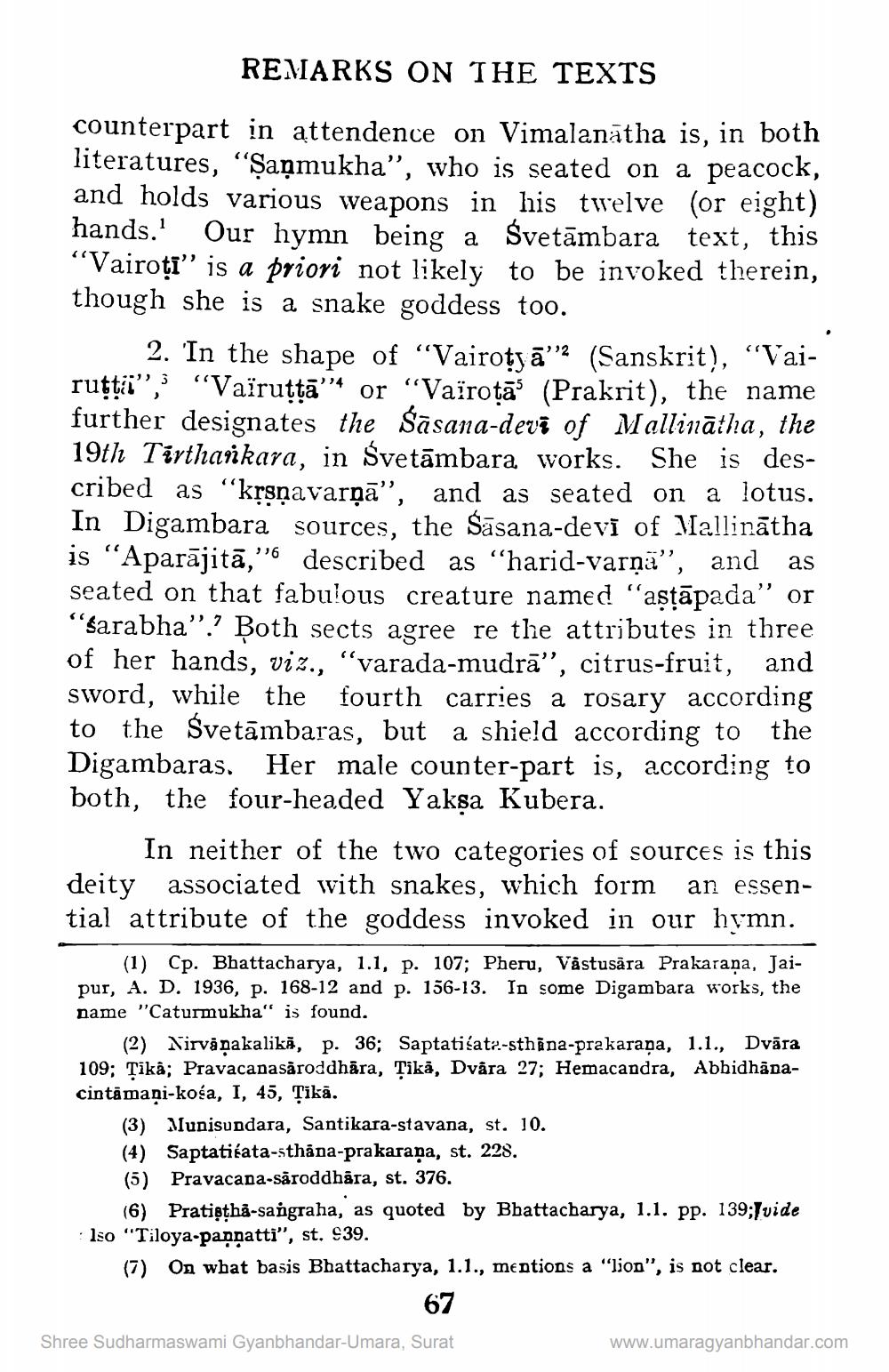________________
REMARKS ON THE TEXTS
counterpart in attendence on Vimalanatha is, in both literatures, “Saņmukha”, who is seated on a peacock, and holds various weapons in his twelve (or eight) hands. Our hymn being a Svetāmbara text, this "Vairoti” is a priori not likely to be invoked therein, though she is a snake goddess too.
2. 'In the shape of “Vairotjā' (Sanskrit), "Vairutti”; “Vaïruttā''4 or “Vaïrotās (Prakrit), the name further designates the Śāsana-devă of Mallinātha, the 19th Tirtharkara, in Svetāmbara works. She is described as "krsnavarņā”, and as seated on a lotus. In Digambara sources, the Sāsana-devī of Mallinātha is “Aparājitā," described as “harid-varņa”, and as seated on that fabulous creature named "aştāpada" or "Sarabha”.? Both sects agree re the attributes in three of her hands, viz., "varada-mudrā”, citrus-fruit, and sword, while the fourth carries a rosary according to the Svetāmbaras, but a shield according to the Digambaras. Her male counter-part is, according to both, the four-headed Yaksa Kubera.
In neither of the two categories of sources is this deity associated with snakes, which form an essential attribute of the goddess invoked in our hymn.
(1) Cp. Bhattacharya, 1.1, p. 107; Pheru, Våstusara Prakarana, Jaipur, A. D. 1936, p. 168-12 and p. 156-13. In some Digambara works, the name "Caturmukha" is found.
(2) Nirvåpakalik), p. 36; Saptatisatz.-sthina-prakarana, 1.1., Dvāra 109; Tika; Pravacanasāroddhāra, Pikā, Dvåra 27; Hemacandra, Abhidhānacintämaņi-kośa, I, 45, Țikā.
(3) Munisundara, Santikara-stavana, st. 10. (4) Saptatibata-sthåna-prakarana, st. 228. (5) Pravacana-sāroddhāra, st. 376.
(6) Pratisthå-sangraha, as quoted by Bhattacharya, 1.1. pp. 139;/vide lso "Tiloya-pappatti", st. $39. (0) On what basis Bhattacharya, 1.1., mentions a "lion", is not clear.
67
Shree Sudharmaswami Gyanbhandar-Umara, Surat
www.umaragyanbhandar.com




